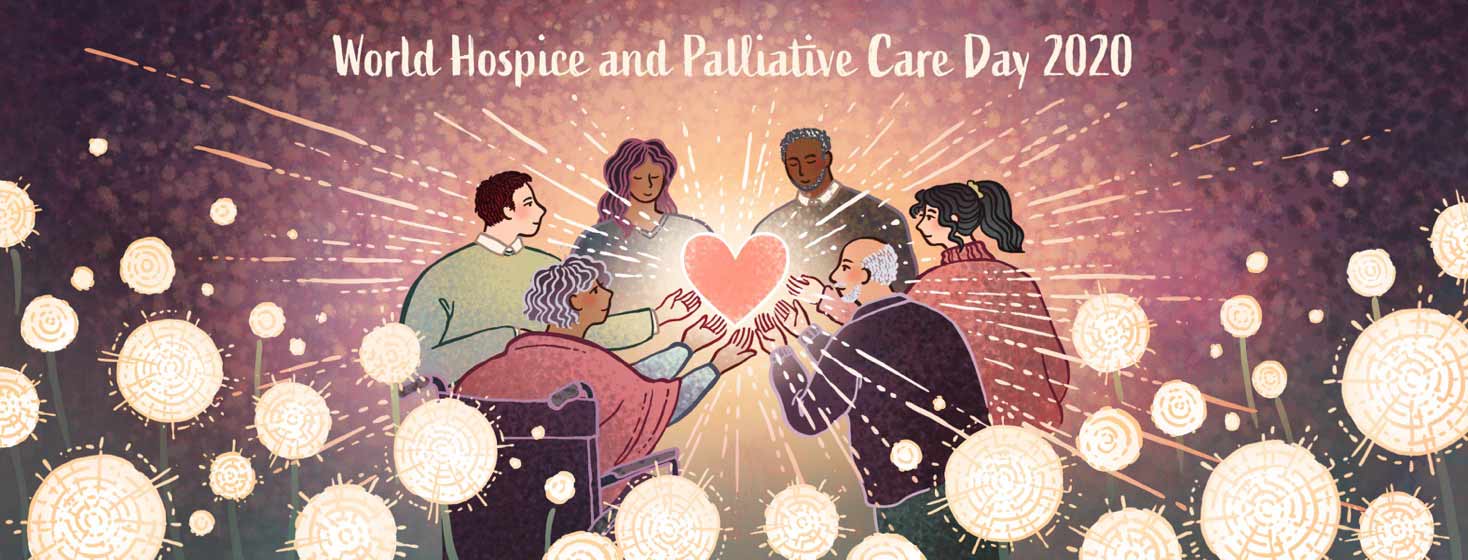World Hospice & Palliative Care Day 2020: Voices from the Community
Each year, World Hospice and Palliative Care Day is observed in October. This year, October 10 will mark the day to celebrate and support hospice and palliative care around the world. The goal is to raise awareness and understanding of the needs – medical, social, practical, and spiritual – of people living with serious and debilitating conditions and their families.
Hear from the community
Speaking out about these issues also helps to increase the availability of hospice and palliative care. We began the conversation by reaching out to community members and asking you to share how this type of care has changed your life or the life of someone you know. We heard back from members and these are some of the experiences they shared.
I had no idea palliative care was even available to me
Palliative care is care that improves the quality of life for anyone who is living with a serious or debilitating illness. Many people with life-limiting conditions can greatly benefit from palliative care. It is worth asking your doctor, healthcare provider, and insurance provider about this type of care to explore what options are available to you.
“I have help from a palliative care team. They are wonderful and have provided me with support. I had no idea palliative care was even available to me!”
“I was not connected to the palliative care group until I had completed chemo and started maintenance, so I wish it had been sooner.”
Palliative care should begin with the diagnosis
In many cases, anyone with a serious, debilitating condition can benefit from palliative care services from the time of their diagnosis. Palliative care options work in many ways, from pain management to help with emotional stress and anxiety. In some cases, care can include access to additional equipment that helps with safety and mobility. Spiritual counseling can be an option as well.
“Palliative care should begin with the diagnosis and follow the patient’s needs as the disease progresses.”
“I started palliative care right after diagnosis of multiple myeloma and myelodysplastic syndrome. I have used their services to help control nausea and pain over the past 3 years. Palliative care is not just for a terminal diagnosis. They are there to help you throughout your journey.”
The type of palliative care varies greatly and depends on the agency you choose
Just as treatments can be very different between hospitals, so can the care given by different palliative care providers. It is worth doing some research and asking around about the best available options for your condition. Attending a local support group meeting for your diagnosis might be a good place to ask about the differences between agencies.
“Unfortunately, the type of palliative care varies greatly and depends on the agency you choose, and no two agency/staff are alike.”
Palliative care is a safe environment to unload stuff you cannot do anyplace else
Many community members mentioned palliative care as a holistic treatment where the doctors also serve, in some ways, like therapists – holding space and talking you through difficult conversations. Likewise, a palliative care doctor is not only focused on medicine, but can also help connect you with healthy ways to destress and practice self-care.
“I no longer use Western treatments by and large, but my palliative care doctor is a saint. I highly recommend checking in to palliative care.”
“I have a great palliative doctor. My doctor is always telling me to have fun and listen to my needs.”
“Palliative care is a safe environment to unload stuff you cannot do anywhere else. My first talks of death were with my palliative care doctor too.”
With hospice, you have months versus years to live
The biggest difference, as many members across all the platforms shared, is that hospice care is not meant to be a long-term care option. Instead, it is designed to bring as much comfort as possible into the last stages of someone’s life.
“With hospice, you have months versus years to live. At this point, curative measures stop, and the focus becomes comfort and quality of life. Palliative care does not have a timeframe. It allows you to continue with curative measures (i.e. chemo) and focuses on symptom management.”
“With hospice, nothing other than care for comfort is done. End-of-life care is of very short duration.”
“Hospice is after all treatments cease, and it continues as the terminal illness progresses to the end.”
Hospice comes to you
One of the biggest differences is that hospice is typically an in-home service, as most people in the latest stages of the disease cannot travel comfortably. Moreover, hospice care is designed to care for you through those last moments, and most people, if given the choice, would rather be in their homes for that time.
“We had to go to palliative care, and they gave us information for places around the city that would help us. Hospice comes to you, and is or can be provided with many different pieces: music therapy, physical therapy, chaplain, and many more. My husband has done palliative care, and my mom has done hospice.”
“Hospice is a great service! We had a very compassionate team that helped until the end.”
Tell us about your experience
Thank you to everyone who shared their experiences. We are grateful to hear such a variety of viewpoints from members in so many communities.
Hear more about palliative care and hospice from our community:
- Palliative Care. What Is It and Should You Care?, Donna Fernandez
- Navigating Palliative Care, Alison Petok
- End of Life Options, Julie Swedberg
To keep the conversation going and spread greater awareness about hospice and palliative care, tell us in the comments what you think of when you hear the terms palliative care or hospice.

Join the conversation